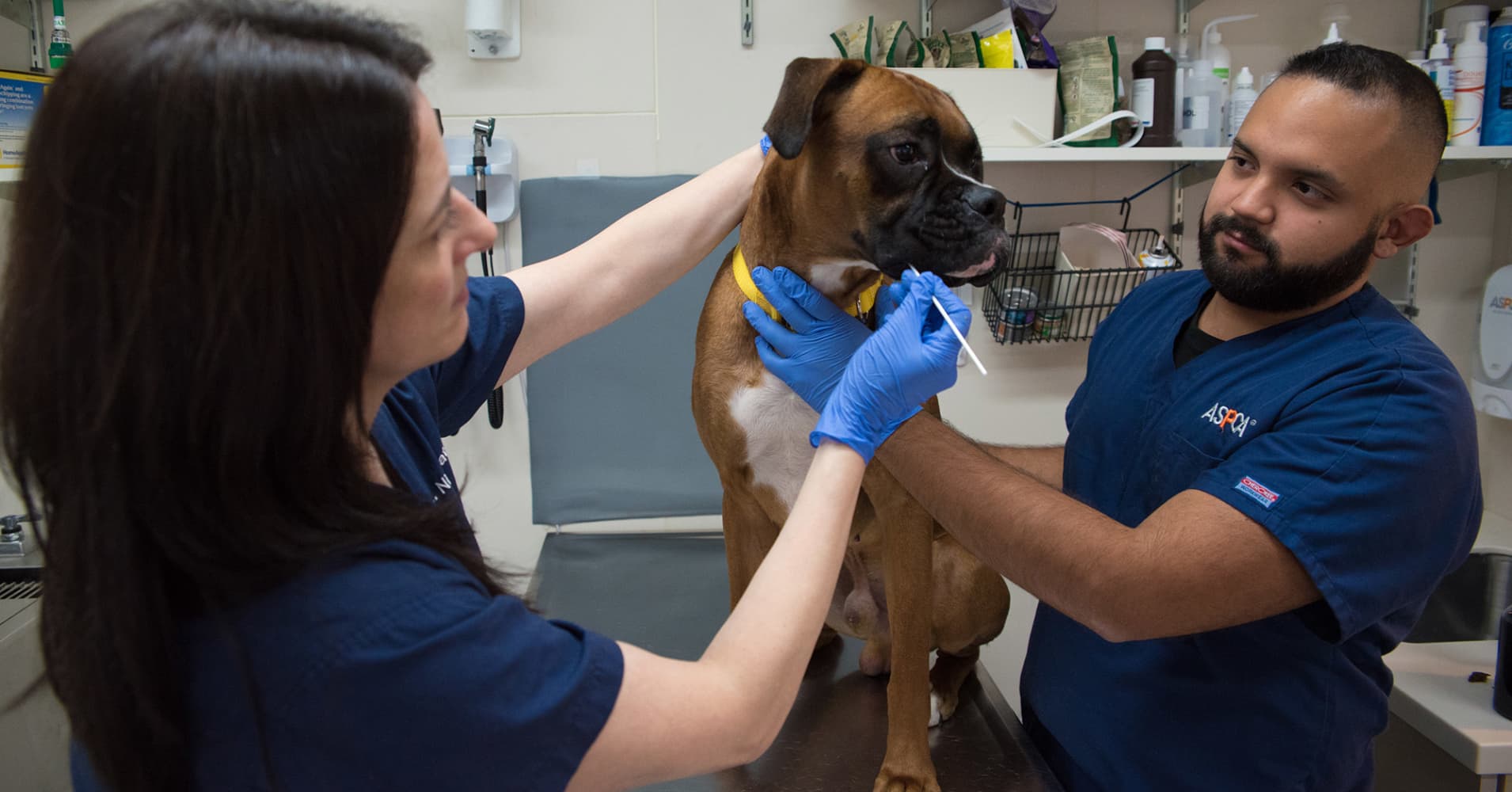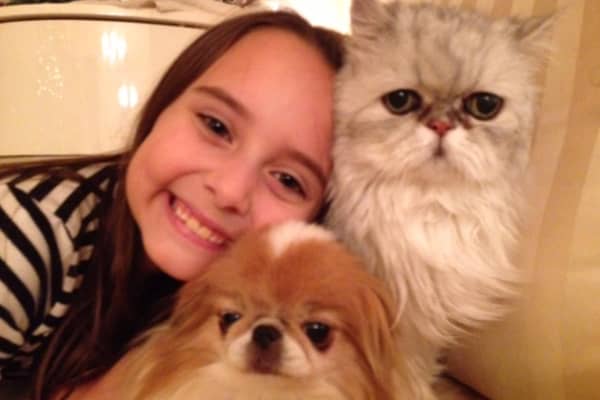They're also focusing heavily on keeping pets and their owners together through "safety net" programs that provide accessible and affordable pet-care services and resources (including spay/neuter surgeries and vaccinations) to local residents who have financial and other challenges accessing those resources for their pets. These programs are currently in place in parts of Los Angeles and New York City.
I thought this might deter her. Does any kid who loves animals and dreams of working with them ever think — oh, I'll work with the NYPD and hear horror stories about animal cruelty? I would imagine that, generally, as with Lola, it comes from a pure place of loving animals and the joy they bring. So, I asked her about it.
Her response surprised me. She said that only made her want to pursue a career working with animals even more.
"Before we went, I just loved animals," she said. "But now, I realize how much they need our help. I had no idea about dog fighting and abusive owners. It's sad. I can't believe there are people out there who throw cats out of windows. I'd like to throw those people out a window and see if they like it."
Next, Matt took us to meet Gail Buchwald, senior vice president of the ASPCA Adoption Center. She left the corporate world to pursue her passion of working with — and for — animals. Lola got to play with a couple of puppies and then some of the kittens (so, yes, there is some of that!). As she sat on the floor petting and playing with the animals, she asked her next question: Is there an age requirement to volunteer at the ASPCA?
Matt explained that volunteers must be at least 16 years old, and must be able to commit to a minimum of eight hours per month for a minimum of six months.
Lola, being 11, asked if there was anything she could do now.
Matt told her she could visit local shelters and see if there are opportunities to help, go to the vet every time her mom or dad went and stay curious — read and learn as much as she could.
Lola asked what some of the hardest parts of the job were.
Matt said it was hearing some of the stories about the animals that come in who are abused or neglected. "The other difficult thing is when pet owners who lose their right [to keep their pet] sometimes come looking to take them back."
Another challenge, Matt said, is changing the public perception.
Matt asked Lola if she knew who Michael Vick was. She shook her head no. Matt explained how he was a famous football player who got convicted for running a dog-fighting ring. It was an awful situation but, ironically, it ended up being great for raising awareness. Before Vick, most people didn't even know dog fighting was still a thing. We exited the 92nd Street building and all walked a block over to their next location.
Lola asked if it was just cats and dogs at the ASPCA.
Matt explained that, while the ASPCA Adoption Center primarily focuses on finding safe and loving homes for dogs and cats, they have helped other types of companion animals, including rabbits, and worked on large-scale investigations involving a variety of farm animals. They also have a farm animal welfare program that aims to improve the treatment of farm animals through education and advocacy.
And then we entered into the Gloria Gurney Canine Annex for Recovery & Enrichment (CARE) and the ASPCA Kitten Nursery. It was a large space with what seemed like hundreds of kittens. As we made our way through the facility, we found two women in the process of helping feed tiny kittens. Eventually we made our way upstairs where we looked through the glass at some dogs that were recently obtained from a large dog-fighting ring.
I was grateful that Matt was taking Lola to see all of it — the good and the bad. Not just rows of cute, fuzzy kittens or adorable puppies. Too many times in any career, we romanticize it and all the great things about it. But really, any job is good and bad — and better for her to see it all now and make an informed decision.
Lola's still quite a few years away from college and getting a job, but we thought we'd ask what some of the career options are for kids who are interested in careers involving animals and animal rights.
Matt said career options can range from working directly with animals to less hands-on — but still very important — endeavors, including lawyers and lobbyists who help animals by writing animal protection laws and lobbying their legislators to get them passed.
After our 90-minute informational tour ended, we said our goodbyes and thank yous. Lola and I walked to the garage and then hopped in the car.
Lola said not only did this reaffirm her desire to work with animals but that she wanted to start making a difference now.
So, after that pint-sized networking opportunity, here is Lola's plan:
- Go to a week-long wildlife camp.
- Read animal activist books for her 7th grade required summer reading.
- Help her grandmother rescue four feral kittens that are in the neighborhood.
I'm so proud of her for taking action on her interests and having the curiosity to find out more — even if it wasn't all petting kittens and playing with puppies.
And, if she happens to be like her dad, and her career interests change with the wind, we'll just hit the road for some more pint-sized networking.
Commentary by Turney Duff, a former trader at the hedge fund Galleon Group. Duff chronicled the spectacular rise and fall of his career on Wall Street in the book, "The Buy Side." He is a commentator on CNBC's "Filthy Rich Guide" and a consultant on the Showtime show, "Billions," starring Damian Lewis and Paul Giamatti. Follow him on Twitter @turneyduff.
For more insight from CNBC contributors, follow @CNBCOpinion on Twitter.




